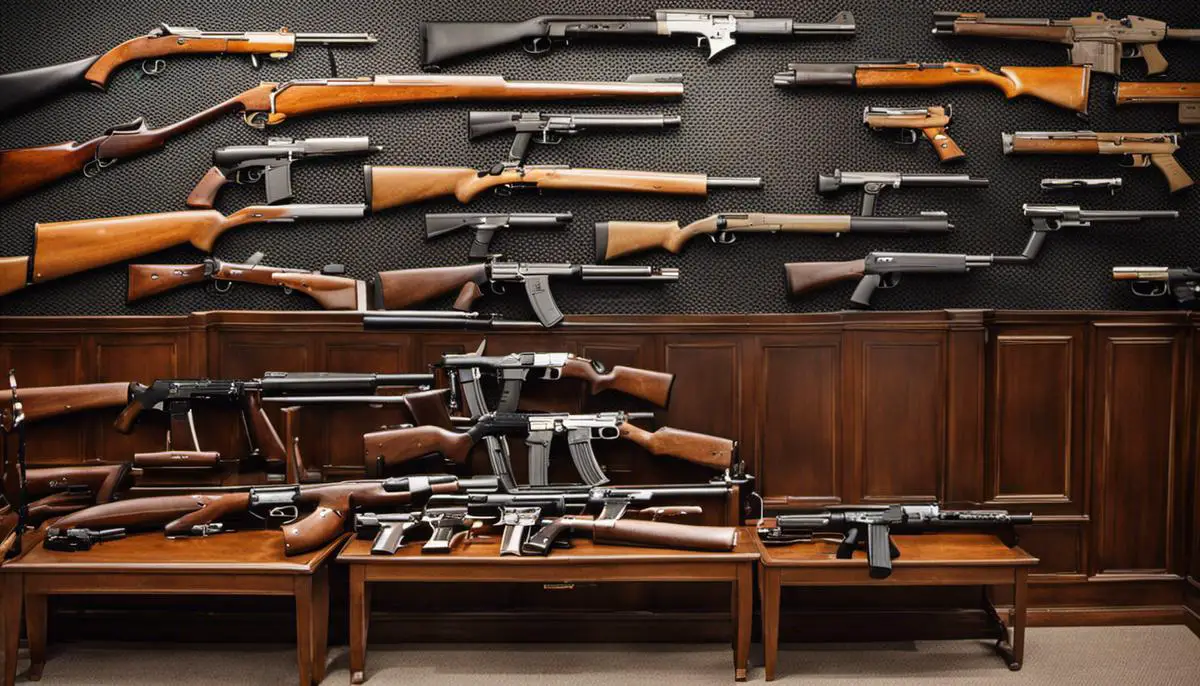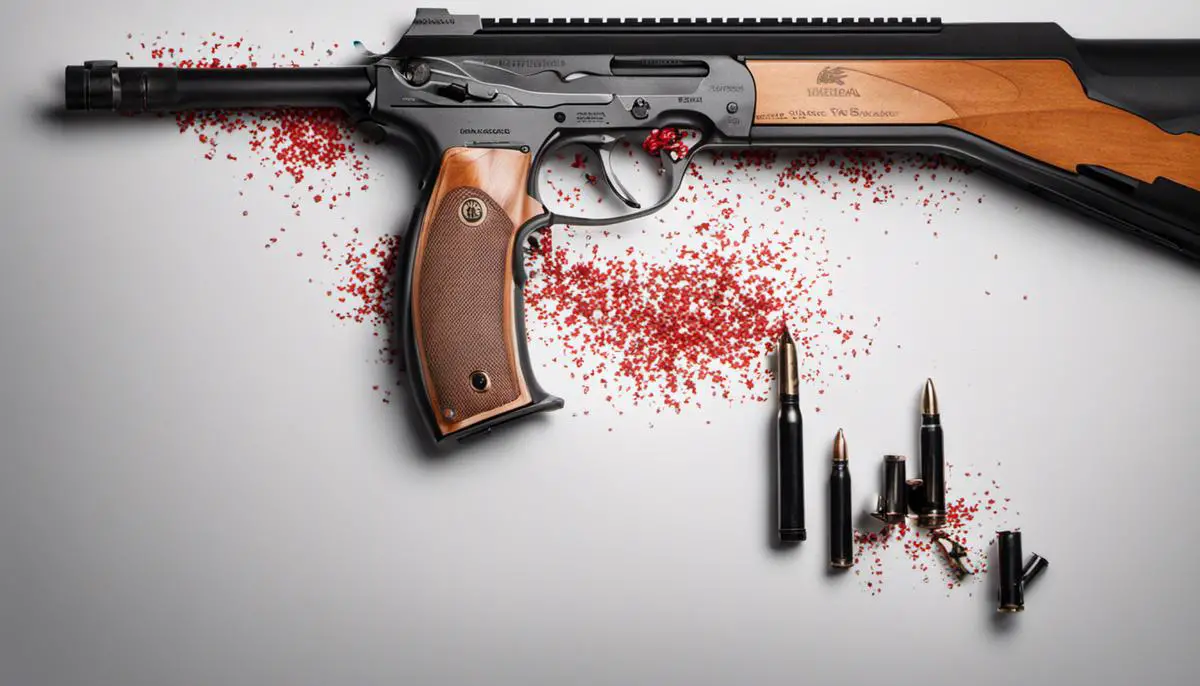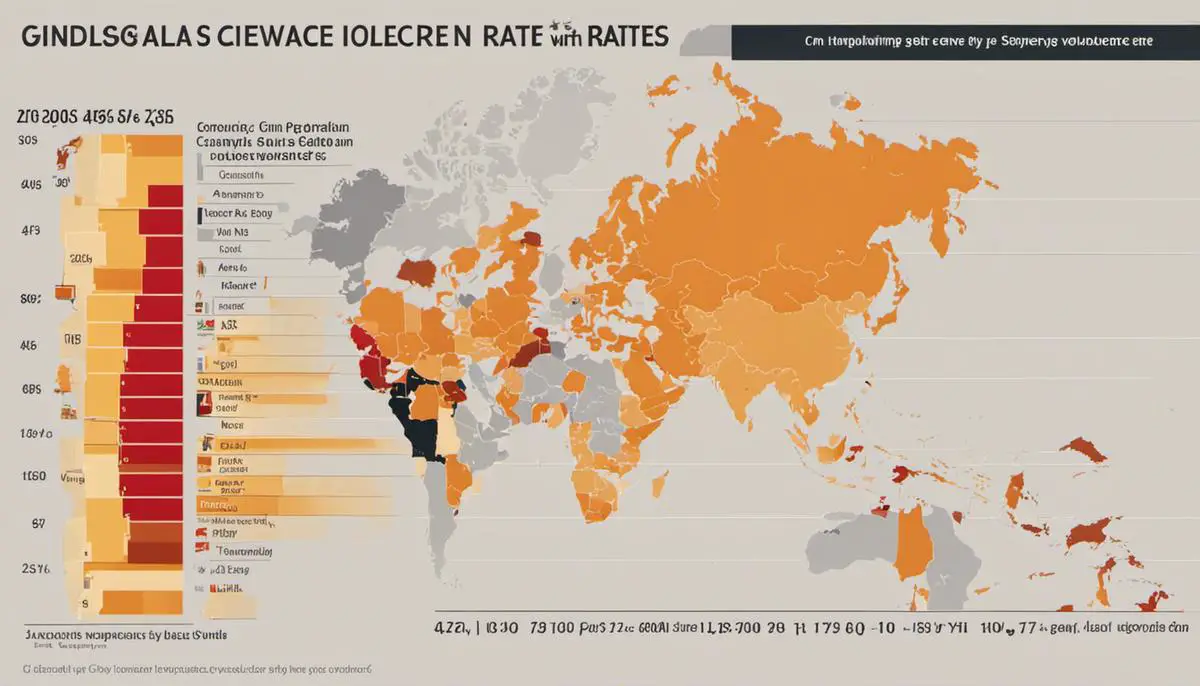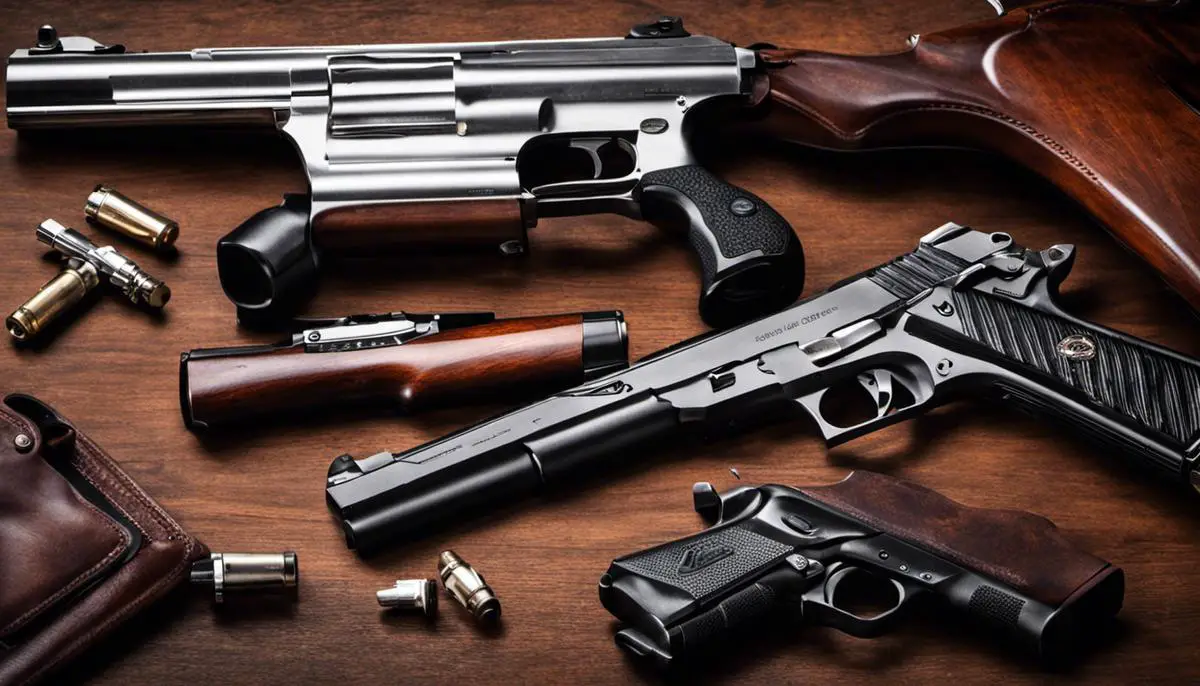Within a global context, Australia’s journey with gun violence presents a unique narrative, punctuated by impactful events, elevated consciousness, and exemplary responsive legislation. This exploration delves into the broad spectrum of Australia’s history of gun violence – the transformation from past to present, the current scenario buoyed by real-time statistics, the positioning of Australia relative to worldwide gun violence data, and a meticulous study of the nation’s robust legal regulations around firearms. Furthermore, it scrutinizes how communities have been impacted and, most importantly, their resilient response to the escalating menace. The critical discourse around prevention and policy recommendations holds significant relevance as the country continues to seek multifaceted solutions to mitigate gun-related violence.
History of Gun Violence in Australia
Historical Overview of Gun Violence in Australia
Historically, Australia has experienced several critical incidents of gun violence that significantly influenced its laws and societal views on gun control. One of the most notable of these was the Port Arthur massacre in 1996, where a lone shooter killed 35 individuals and injured 23 others. This event remains one of the deadliest mass shootings in world history by a single person.
Impact of Legislation on Gun Violence
Australia’s legislative response to the Port Arthur Massacre has had a profound impact on reducing gun violence within the country. Since the introduction of the NFA in 1996, the rate of firearm-related deaths has considerably declined. According to a study by the Journal of the American Medical Association, gun-related deaths in Australia dropped by around 60% between 1995 and 2006.
Additionally, gun-related homicides have decreased significantly. A report from the Australian Bureau of Statistics showed that the gun homicide rate is 22 times lower in Australia compared to the United States. The study concluded that in 2016, only 32 of Australia’s 453 homicides (7%) involved a firearm – a substantial decline from 1996 when firearms accounted for 25% of all homicides.
Mass Shootings and Gun-related Crimes
Australia has experienced very few mass shootings since the enactment of the NFA. The country saw no mass shooting events (defined as five or more fatalities, excluding the perpetrator) for 20 years following the Port Arthur massacre. In contrast, prior to 1996, mass shootings occurred approximately once a year.
However, the presence of firearms in domestic violence and suicide cases remains a major concern. The Australian Bureau of Statistics has reported that around two-thirds of gun-related deaths in Australia are suicides, signifying a crucial area of focus in the realm of gun safety and regulation.
Concluding Thoughts
Australia has proven that gun control legislation can be effective in preventing firearm-related violence. This substantial reduction is largely associated with the proactive steps taken by the country in the wake of the Port Arthur tragedy. Australia’s thorough approach to gun control has largely made its communities safer, providing a potential template for other nations to consider.

Current Gun Violence Situation
Understanding Australian Gun Violence Statistics
Australia’s landmark gun control law, established in 1996, has strongly impacted the nation’s rate of gun violence, causing a considerable decrease in both firearm suicides and homicide statistics. Astonishingly, as of 2022, Australia has been without a mass shooting for over 24 years. Data from the University of Sydney’s GunPolicy.org indicates that there were merely 3 firearm-related homicides per one million people in 2016. This figure starkly contrasts with that of the United States, which stood at approximately 29 per million the same year.
Gun Related Incidents and Trends
Despite a decrease in gun-related deaths, gun violence related incidents still occur, albeit at a much lower rate compared to the 1990s before the reform. Between 2000 and 2014, the Australian Crime Commission reported an average of ~25% of homicides were committed with a firearm. The number of incidents fluctuates yearly, but the overall trend shows a decrease since the 1996 legislation.
Underlying Causes of Gun Violence in Australia
The causes of gun violence in Australia vary and can be attributed to several factors. Illegal importation of firearms, and their misuse commonly stems from organized crime groups, particularly outlaw motorcycle gangs. Other significant factors include domestic violence situations and mental health issues. Australia’s stringent firearm laws contribute to the decrease, including limitation on types of firearms available for purchase and mandatory licensing, but there has been concern for recent increase in gun ownership over the past several years.
Impacted Populations
Gun violence impacts some communities more in Australia, specifically those in socioeconomically disadvantaged areas. Reports show higher instances of gun violence in lower socio-economic suburban neighbourhoods.
Legislation Impact
In the wake of the horrendous Port Arthur Massacre in 1996, Australia enforced the National Firearms Agreement. This encompassed the prohibition of certain firearms, establishment of stricter licensing laws, the inauguration of a firearm registry, and the implementation of a 28-day waiting period for gun purchases. Internationally recognized, these measures set a high bar for other countries grappling with gun violence. These stringent actions have notably managed to curb the levels of gun violence over the past years. Nonetheless, it’s crucial that efforts to address the root causes of gun violence persist to sustain this positive trend.

Comparative Analysis
Australia’s Gun Laws and Violence Rates
The tragic loss of 35 lives during a massacre in Tasmania in 1996 marked a turning point for Australia’s gun laws. The reforms employed included semi-automatic rifles and shotguns ban, strict licensing and registration mandates, and a countrywide firearm buy-back initiative. These aggressive initiatives resulted in a steep decline in gun-related fatalities in Australia.
According to the University of Sydney’s GunPolicy.org, gun deaths in Australia drastically dropped from 2.6 per 100,000 people in 1996, to 0.8 per 100,000 in 2016. Coinciding reports from The Australia Institute’s 2018 review of gun violence displayed a 22% decrease in firearm suicide rates, alongside a significant tumble in firearm homicides since the enforcement of these laws.
Comparing to the United States
Contrastingly, the United States maintains looser gun laws and higher rates of civilian gun ownership. GunPolicy.org estimates that there are 120.5 guns per 100 residents in the U.S., while Australia has only 14.5 guns per 100 residents. The death by firearm rate in the U.S. is dramatically higher than Australia, at 11.96 per 100,000 people in 2019, compared to Australia’s 0.8.
Comparison to Other Countries
In the United Kingdom, where gun laws are more restrictive, and gun ownership is significantly lower, the firearm death rate is only 0.23 per 100,000, as reported by the United Nations Office on Drugs and Crime. Similarly, Japan, known for its strict firearm policies, boasts one of the lowest gun-related death rates worldwide — 0.04 per 100,000.
On the other hand, a country like Brazil has permissive gun laws similar to the United States, and like the U.S., it also grapples with high rates of gun violence. The Brazilian Public Security Forum reports that in 2017, the gun death rate stood at 19.34 per 100,000.
Gun Laws and Violence Rates: A Global Comparison
A variety of components factor into firearm violence rates, encompassing socioeconomic conditions, crime statistics, and the provision of mental healthcare. That said, the configuration of comprehensive gun control policies plays a significant role in dictating these rates. A study published in the International Journal of Crime, Justice, and Social Democracy suggests that countries with stringent gun control legislation typically witness lower gun death rates in comparison to countries with more lenient regulations.
Observing the experiences of countries like Australia, the UK, and Japan, highlights the positive effect tighter gun laws can potentially have on mitigating gun violence. In contrast, nations like the U.S. and Brazil where gun laws are more permissive, demonstrate possible risks associated with such approaches. It’s crucial to point out, though, that a comprehensive solution to gun violence encompasses far more than firearm legislation, and should address a range of societal contributing factors.

Legal Framework for Firearms in Australia
Overview of Australia’s Gun Laws
In Australia, both federal and state/territory jurisdictions contribute to the legal framework that governs the possession, use, and sale of firearms. At the federal level, the Commonwealth of Australia is responsible for areas like the importation of firearms. On the other hand, it is the responsibility of the individual states and territories to regulate matters concerning gun ownership, licensing, and usage regulations.
State-by-State Variations
In terms of gun-ownership norms, some states may be more restrictive than others. For instance, the Northern Territory is known for having some of the country’s most relaxed laws. This contrasts with places like Victoria which implements stricter gun controls. Despite these variations, all states and territories follow the National Firearms Agreement, established in 1996.
National Firearms Agreement
The National Firearms Agreement (NFA) was introduced in response to the Port Arthur massacre in Tasmania in April 1996, where 35 people were killed. This agreement among states and territories significantly restricted the legality of owning, possessing, and using a firearm. Semiautomatic and fully automatic rifles and shotguns are forbidden under this agreement, and owning most other types of firearms requires a specific, valid reason.
Gun Law Evolution in Australia
Australian firearms law has been subject to significant, continuous reform over recent decades. Key events such as the Hoddle Street massacre in 1987, the Queen Street massacre in 1987, and most notably, the Port Arthur massacre in 1996 have led to the systematic revision of laws. Each incident resulted in tightening of gun laws, with the most dramatic changes occurring after the Port Arthur massacre.
Understanding Gun Violence Statistics in Australia
In Australia, the implementation of stringent firearms laws has led to a notable decrease in gun violence. According to multiple studies, this reduction can be attributed to the National Firearms Agreement (NFA). One such study published in the American Law and Economics Review found a 65% decrease in gun homicide rates from 1997 to 2006.
A 2016 review published in the Journal of Criminology pointed out that no mass shootings occurred in Australia from 1996 to February 2016. It also reported a 23% decrease in firearm homicide rates and a stunning 65% drop in firearm suicide rates.
However, a caveat to these statistics is that they may not fully account for illegal gun possession, usage, and sales because such clandestine activities are frequently underreported. Therefore, there might be incidents of gun violence that slip through the cracks and do not reflect in official statistics.
Regardless of this, the research community generally concludes that Australia’s stringent approach to gun control and regulations has proven largely successful. It potentially serves as a blueprint for other countries dealing with the scourge of gun violence.

Impact and Response to Gun Violence
The Ripple Effects of Gun Violence: Beyond Victims to Families and Communities
Despite the declining rates of gun violence in Australia, its effects permeate a broader scope beyond the immediate victims. The broader impact touches families and entire communities steeped with lingering fear, insecurity, and disrupted social cohesiveness. Many survivors and their relatives grapple with mental health issues such as post-traumatic stress disorder (PTSD), anxiety, depression, among others.
Gun violence unexpectedly thrusts a financial and emotional burden on the families involved, as they grapple with medical bills, funeral costs, and loss of income. This scenario is worsened by the psychological devastation that comes with suddenly losing a loved one.
Communities also bear the brunt of these violent episodes, with the resultant fear and grief significantly affecting their perception of safety and overall quality of life. Such incidents can strain communal relationships, as individuals wrestle with feelings of anger, fear, and overwhelming sadness.
Law Enforcement Response to Gun Violence
Australia’s law enforcement agencies implement strong and strategic responses to gun violence. Following the Port Arthur massacre in 1996 where 35 people were killed, Australia overhauled its gun laws and instituted a rigorous approach to gun control. This has included stringent licensing requirements, comprehensive background checks, and a total ban on semiautomatic rifles and shotguns.
Such measures have had a significant impact on gun-related homicides. The rate has reduced significantly from close to 0.8 deaths per 100,000 people in 1996, just before the major gun law reforms, to 0.2 deaths per 100,000 people in 2016.
Healthcare Sector and Gun Violence
The Australian healthcare sector plays a crucial role in mitigating the impacts of gun violence. Medical practitioners not only cater to physical wounds but also provide psychological support to victims of gun violence. Initiatives such as trauma counselling and mental health services aim to support victims and their families through their recovery journey.
Psychologists and psychiatrists within the healthcare sector work to manage and mitigate the mental health impact of gun violence on individuals and communities. In doing so, they address the immediate psychological effects and work to prevent long-term mental health issues associated with gun violence.
Community Organization Response to Gun Violence
Community organizations across Australia are working diligently to respond to gun violence and its consequences. Numerous agencies provide support services for victims and their families, including counselling, advocacy, and financial assistance.
Community-led initiatives often include education and prevention efforts targeted at raising awareness of the devastating impacts of gun violence. They work in tandem with law enforcement agencies to help disseminate information about responsible gun ownership and the consequences of illegal gun use.
The issue of gun violence in Australia is far-reaching, leaving lasting effects on its victims, their families, and communities at large. However, a proactive approach from various sectors, including law enforcement, healthcare providers, and community organizations, has resulted in a comprehensive, multi-layered defense against this widespread social problem.

Preventative Measures and Policy Recommendations
Comprehensive Actions and Policies to Curb Gun Violence
In response to the escalating incidence of gun violence, Australia has put into place numerous preventative measures and policies. The most impactful among these is the National Firearms Agreement (NFA) enacted in 1996. This policy was a direct consequence of the Port Arthur massacre, a tragic event that led to the loss of 35 lives. Under the provision of the NFA, semi-automatic and automatic firearms were prohibited, a gun buy-back initiative was launched, and more rigorous standards for licensing and ownership were implemented.
Effectiveness of the National Firearms Agreement
The NFA has been successful in reducing gun violence in Australia. According to a study published in the American Law and Economics Review, the firearm homicide rate fell by 42% in the seven years after the law passed, with no corresponding increase in non-firearm related homicides. Furthermore, a 2018 report from the Australian Criminal Intelligence Commission (ACIC) noted a substantial reduction in the proportion of murders committed with firearms since the enactment of the NFA.
Legal Reforms for Reducing Gun Violence
While the NFA had a significant impact, further reforms continue to be proposed and implemented. This includes amending legislation to stay ahead of technological changes. For example, 3D printed guns and firearm parts pose a new challenge, which led to the passage of the Criminal Code Amendment (Firearms Trafficking) Bill in 2017. This bill increases penalties for trafficking illegal firearms and firearm parts, including those manufactured using 3D printing technology.
Education and Community Programs
Beyond laws and regulations, Australia has also focused on education and community intervention. The National Coalition for Gun Control and Australian police departments work together to educate the public about the dangers of guns and the importance of safe storage. Community programs, particularly in areas with higher rates of gun violence, work to mediate conflicts and educate young people about the dangers of gun use.
International Comparisons
Many other countries have also enacted effective gun control measures. In Japan, where firearms are banned for nearly all civilians, gun violence is extremely rare. The UK also has strict gun laws with comparatively low rates of gun violence. These international examples, along with Australia’s own successes, underscore the effectiveness of preventative measures and policies in reducing gun violence.
Policy Recommendations
To continue reducing gun violence, some recommendations include increased data collection and research into gun violence, further fund community intervention programs, and constantly review and update legislation to account for technology advances and changes in societal behaviors. Public education campaigns can also be leveraged in order to instill a culture of gun safety and responsible ownership. These safeguards can collectively ensure that Australia continues to maintain low rates of gun violence as compared to other nations with more relaxed gun control legislation.

Photo by shanerounce on Unsplash
Reflecting on Australia’s journey, the complexity of the issue of gun violence becomes apparent. Distinct historical contexts, diverse global comparisons, varied legal approaches, the deep emotional impact, and indispensable policy recommendations each weave a critical strand of understanding. Examining these sections collectively lends vital insights into addressing this complex issue, emphasizing the imperative for comprehensive preventative measures tailored to Australia’s unique landscape. While Australia continues in its quest towards peaceful conflict resolution, understanding these facets provides a base for initiating meaningful dialogue and collaborative action towards further reducing gun violence incidents.






